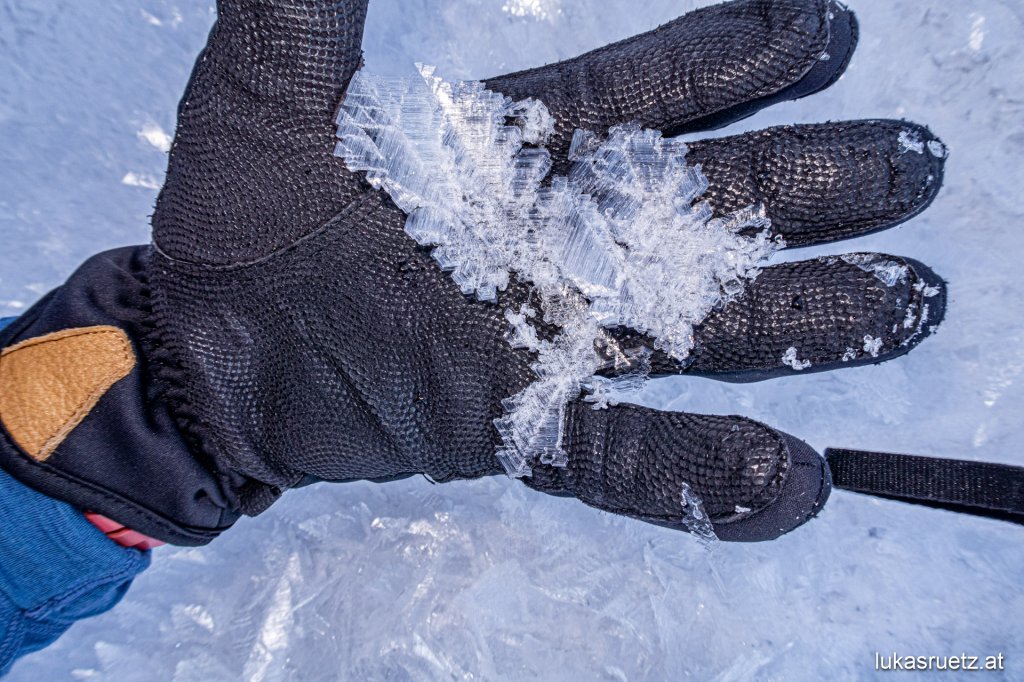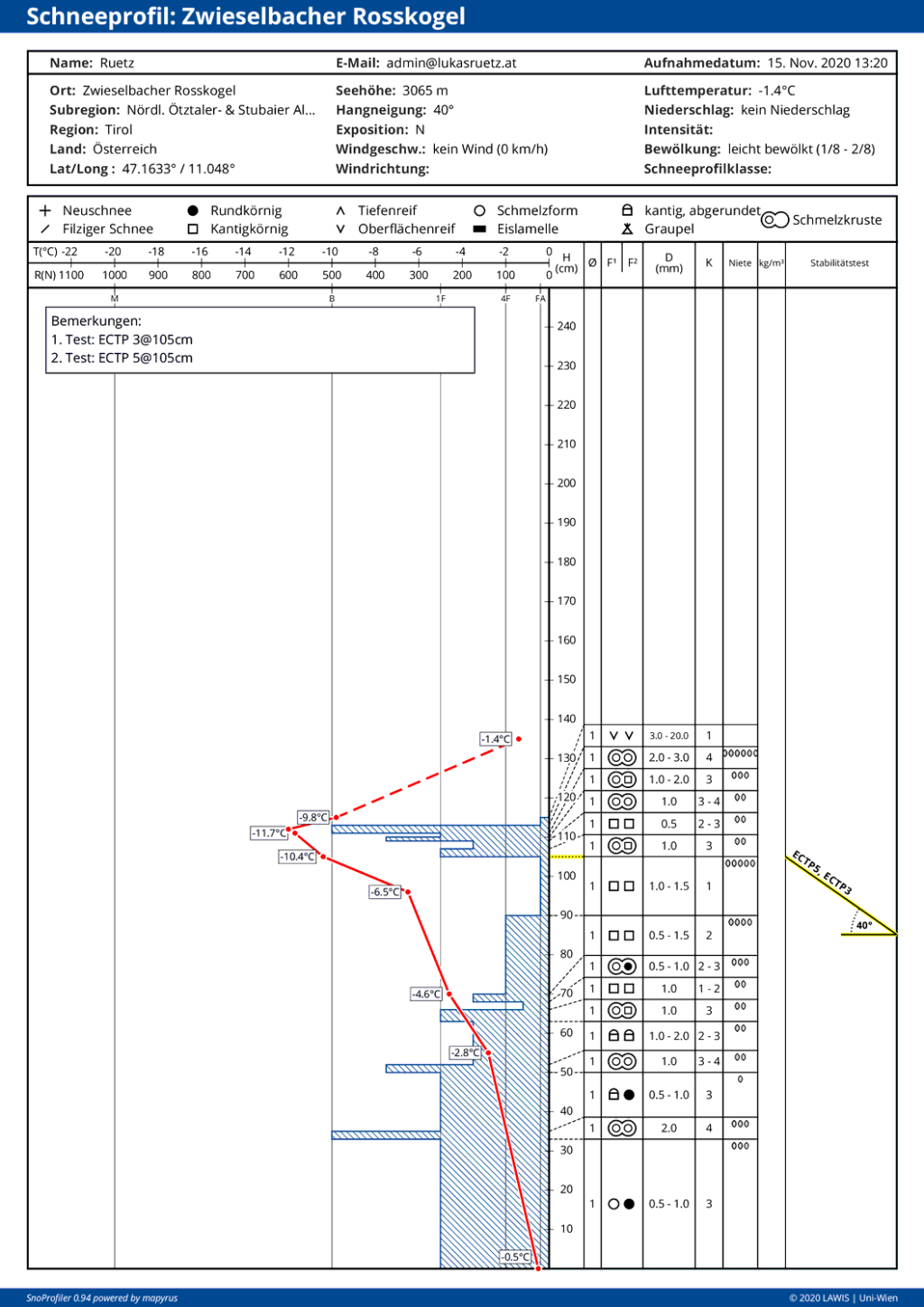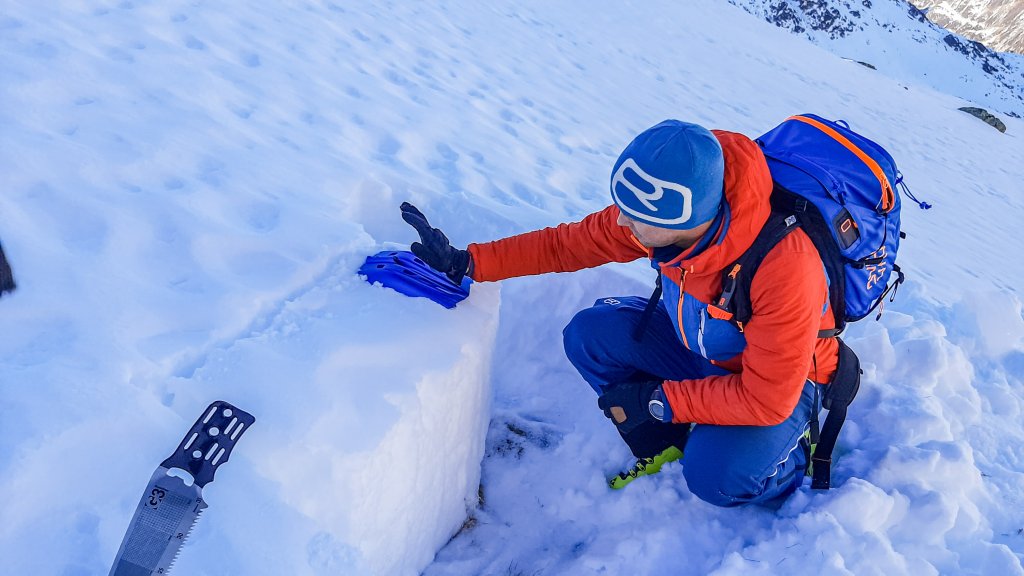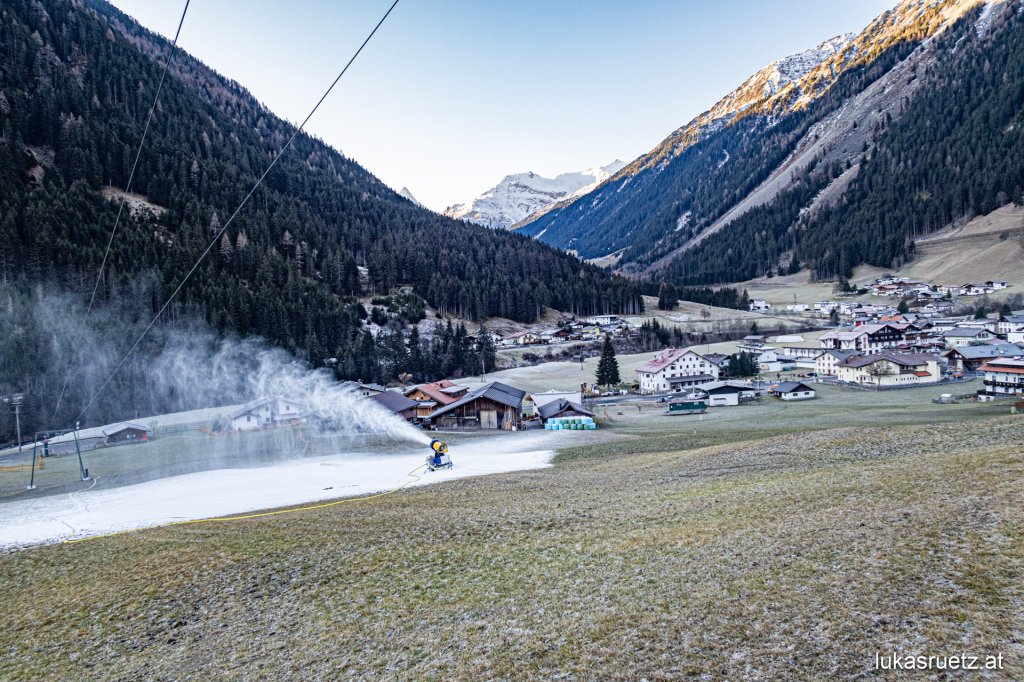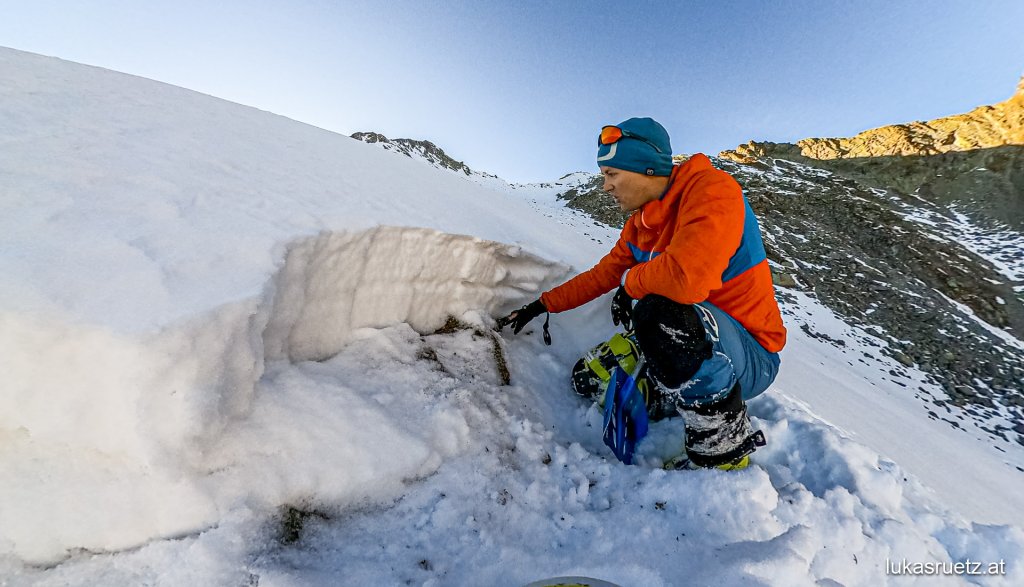Read profile
The snow profile was recorded on November 15th on the Zwieselbacher Rosskogel at 3065m in the Stubai Alps. It is a 40° steep north-facing slope. During the profile recording it is slightly cloudy, the air temperature is -1.4°C and there is no wind.
For the profile, 16 layers were carved out by hand, which are distributed over a snow depth of 115 cm. Incidentally, the snow depth is the thickness of the snow cover measured vertically. The snow thickness would be the thickness of the snowpack measured at right angles to the ground.
In the upper area, it is a sequence of melt crusts (spectacle symbol) and moderately built-up transformed layers in between (square symbol). Directly on the surface we find surface frost with a grain size of three to 20 millimeters, i.e. already huge, platelet-shaped crystals. This surface frost sits on a fusion crust that has already undergone some noticeable structural transformation - which is why the glasses sometimes show a square instead of a circle.
Below the five-layer structure of the clearly structurally transformed fusion crust is an extremely soft layer (hardness 1, blue bar deflects only minimally to the left), which has also been structurally transformed and which we can see from 105cm to 90cm. The angular crystals of this layer are 1 - 1.5 millimeters in size. There are five rivets at the upper layer boundary to the fusion crust. These are automatically calculated by the snow profile program and show large differences between the layers in terms of hardness, grain size and grain shape, among other things. It is easier to trigger a fracture at the layer boundaries with many rivets. An ECT - Extended Column Test - was carried out twice as a snow cover test (see comments field). In the total of 30 impacts of each ECT, only one fracture was triggered in the entire snowpack. However, the ECTP result was achieved on the third and fifth impact respectively. The P stands for propagation and indicates that the weak layer is broken over the entire width of 90 cm, not just under the blade where you hit it. This is referred to as fracture propagation.
Below this, we find another only slightly pronounced, angular layer below an even weaker crust. And below approx. 65 cm, the snowpack becomes much harder and more compact. We also only find old, built-up layers that have already been able to degrade again. These are the angular-rounded crystals between the crusts. The lowest layer consists of round-grained snow and melt forms. There is no evidence of the formation of a weak layer of old snow here.
The temperature profile in the snow cover shows a strong gradient at the top with a change from -11.7°C to -6.5°C over around 15cm. So 5.2°C difference on only 15cm. Below this, the gradient becomes steeper, i.e. less pronounced. There is almost a meter of snow between the measurement of -6.5°C and -0.5°C on the ground. The gradient is therefore only 6°C/1m.
